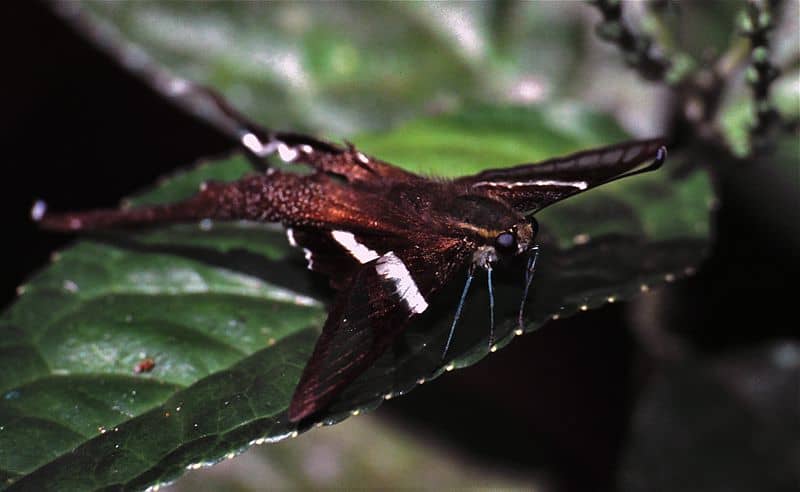
Green Dragontail Facts
- Perhaps most notably, the gorgeous Green Dragontail does not yet appear on the well-known Red List of the IUCN. However, that may soon change, given the rate at which its native habitat continues to vanish.
- In addition, entomologists currently recognize a surprising total of 10 subspecies of this impressive invertebrate. This qualifies as remarkable, given that all of them inhabit the same immediate region of the world.
- Furthermore, this outstanding creature remains famous among lovers of Lepidoptera for the unique movement of its wings. That holds true because, in flight, the distinctive structures appear to wave and weave in the air.
- Finally, like many species this remarkable creature now faces the escalating threat of extinction. Also, as is often the case, its primary threats include the very real dual dangers climate change and habitat loss.
Related Articles
Green Dragontail Physical Description
Firstly, the magnificent Green Dragontail proves that size bears no relation to beauty. That’s because the stunning Lepidoptera only attains a small wingspan. In fact, the species attains an average wingspan of only 1.6 – 2.2 in (4 – 5.5 cm).
However, the common name for the insect remains rather misleading. That’s because the marvelous invertebrate actually only displays a tiny amount of green. Further, this color pattern appears in a small stripe running along the wings and tail.
Yet, the majority of the body of the tiny invertebrate displays a dramatically different pattern of colors. Due to this, the predominant color pattern consists of black. Yet, numerous small white patches appear on the delicate wings.
Finally, the amazing creature does display the trait of sexual dimorphism, like many related species. But, it does so only to a very small degree. In its case, the females of the species typically present a somewhat duller appearance in the pattern of colors.
- Kingdom: Animalia
- Phylum: Arthropoda
- Class: Insecta
- Order: Lepidoptera
- Family: Papilionidae
- Genus: Lamproptera
- Species: L. meges
Green Dragontail Distribution, Habitat, and Ecology
Not at all surprisingly, the breathtaking Green Dragontail inhabits a rather moderate-sized range. Further, this area of habitation mostly consists of northeastern India, in Asia. But, scattered populations also inhabit other portions of the region.
However, even within that range it typically prefers to live in highly specific areas. Due to this, individuals almost always appear near waterways and streams. Further, these virtually always occur near patches of open ground, exposed to sunlight.
Additionally, most individuals occupy such areas that also happen to appear in a specific altitude range. This highly specific range extends from about 330 – 4,990 ft ( 100 – 1,520 m) in elevation. The exact reason for this remains a complete mystery.
In addition, the remarkable arthropod most commonly takes to the air between the months of April and October. Finally, like many of its related species, after mating the female typically lays the eggs on or near certain host plants.
Species Sharing Its Range
Check out our other articles on 4 Fantastically Fascinating Fungi, Black Sea Hare, Milford Sound, Hawaiian White Hibiscus, Kemps Ridley Sea Turtle, Pocket Shark, Sydney Funnel-web Spider
